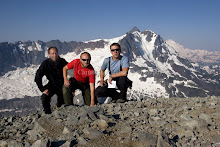
Caption: West View Elementary first-grader Rachel Omdal writes part of the morning message in Spanish on the board in Valerie Lopez’s classroom April 12, 2006 during their homeroom time. The students are a part of the dual-language enrichment program implemented in the 2004-2005 academic year by the Burlington-Edison School District.
I recently completed another feature story about a dual-language program in an elementary school in Burlington, Wash. It was a follow-up to the original story written in 2006.
Writing these stories taught me a lot about the education system: educators are working really hard to teach cultural appreciation and produce multi-lingual citizens and the students truly grow in all aspects of their education. It's nice to see that educators have acted on research that has said for years that students learn a second language much easier when they are in elementary school.
Of course, there are problems such as underfunding and lack of immigrant parent participation in their child's education, among others. They are getting better, though. But these programs are spreading throughout regions with growing immigrant populations and will hopefully become even more popular nationally.
According to the Center for Applied Linguistics, there are 338 Two-Way Enrichment programs in K-12 schools. There are actually many more than that, many schools have just not yet registered. These programs continue to get media attention and seem to have great success. In my experience, the program (in its third year) is certainly breaking cultural barriers, improving students' skills across the board -- in both languages -- and involving parents in their child's education.
If you're interested, read the first story in Klipsun Magazine at WWU (click on the title of this entry) and then look for the next one sometime (not sure when they will publish it) in ESL magazine, www.eslmag.com
- Christopher



